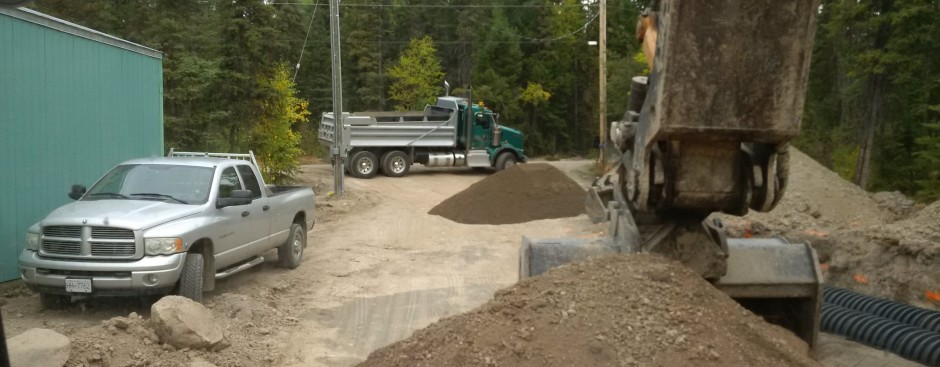 Onsite Installations Inc. is owned and operated by Dean Dingwall, who is an ROWP and is certified by ASTTBC as an “Authorized Person” as defined by the Sewerage System Regulation in British Columbia.
Onsite Installations Inc. is owned and operated by Dean Dingwall, who is an ROWP and is certified by ASTTBC as an “Authorized Person” as defined by the Sewerage System Regulation in British Columbia.
From the ASTTBC website, the following may be helpful in understanding the term “Authorized Person”.
REGULATION AND PROGRAM
The Sewerage System Regulation (SSR) applies to all smaller onsite wastewater treatment systems, including those for houses, small businesses and even small communal systems.
Compared to the previous Sewage Disposal Regulation, the SSR represents a significant change in approach. Responsibility for the proper design and installation of onsite systems has been transferred from Health Authorities to ‘Authorized Persons’ as defined by the SSR.
Now, all work on onsite wastewater systems, repairs to systems and any maintenance on systems must be performed by an ‘Authorized Person’. It is the responsibility of the homeowner to ensure the system is maintained by an Authorized Person, and is operated within the capabilities and limitations of that system.
What is an Authorized Person?
The Sewerage System Regulation (SSR) provides for two types of ‘Authorized Person’: a Registered Onsite Wastewater Practitioner and a Professional. No others may plan, install or maintain systems in British Columbia. Doing so is illegal and considered an offense under the Regulation.
Registered Onsite Wastewater Practitioner
Depending on training and qualifications, a Registered Onsite Wastewater Practitioner (ROWP) plans, installs, maintains and/or inspects onsite systems. They are registered with the Applied Science Technologists & Technicians of British Columbia (ASTTBC). To be registered, individuals must complete the required education, a Professional Practice & Ethics exam, provide references, and demonstrate experience by successfully completing an Initial System Review.
ROWP’s must adhere to a strict Code of Ethics and also follow the Ministry of Health Services’ Sewerage System Standard Practice Manual which sets out best practices.
ASTTBC has four main classifications of ROWP:
Planner – performs site and soil assessment; works with owner to establish needs; designs system; reviews installation; and creates maintenance plan to ensure proper operation.
Installer – installs system as designed by a planner.
Maintenance Provider – monitors and maintains system according to maintenance plan.
Private Inspector – inspects and assesses existing systems.
Except for Private Inspectors, registration is mandatory under the SSR. ROWP’s can be registered in more than one category, eg: the same ROWP may plan and install a system.
When you receive a report from a ROWP, they are required to stamp and sign their report, Filings, plans or similar documents. A ROWP may carry a restriction on their registration that prevents them from carrying out specific work as not all ROWP’s have the same level of experience and/or training as others.
Professional
A Professional may design, install, and maintain all types of onsite systems. They are often involved when the site or use requires design services beyond the specific scope of a ROWP. Often Professionals will use the services of a ROWP and supervise them in the installation and maintenance of complex systems.
Where registered to do so, ROWP’s may also undertake work on more advanced systems (such as a ‘Type 3’) and are considered to be a Professional under the SSR where they have met specific education and experience requirements. Some Professional Engineers (PEng) registered with the Association of Professional Engineers and Geoscientists of BC (APEGBC) have also become ROWP’s.
Improved Environment & Health Protection
Over the last 20 years there has been an increasing realization that many onsite systems were designed to dispose of sewage, rather than to treat and disperse it. Although a system may have functioned without evidence of sewage coming to the surface, it was possible that effluent may have been contaminating the environment through the groundwater.
As development increases and more homes are built-in rural subdivisions, environmental impacts and the potential for contamination of drinking water increases. With this comes a demand from the public for safe systems, as well as recognition by local governments that onsite systems are an integral part of a long-term waste management strategy. Modern systems are designed to treat the effluent fully, disperse it with little or no impact to the environment, and have a long, effective life.
